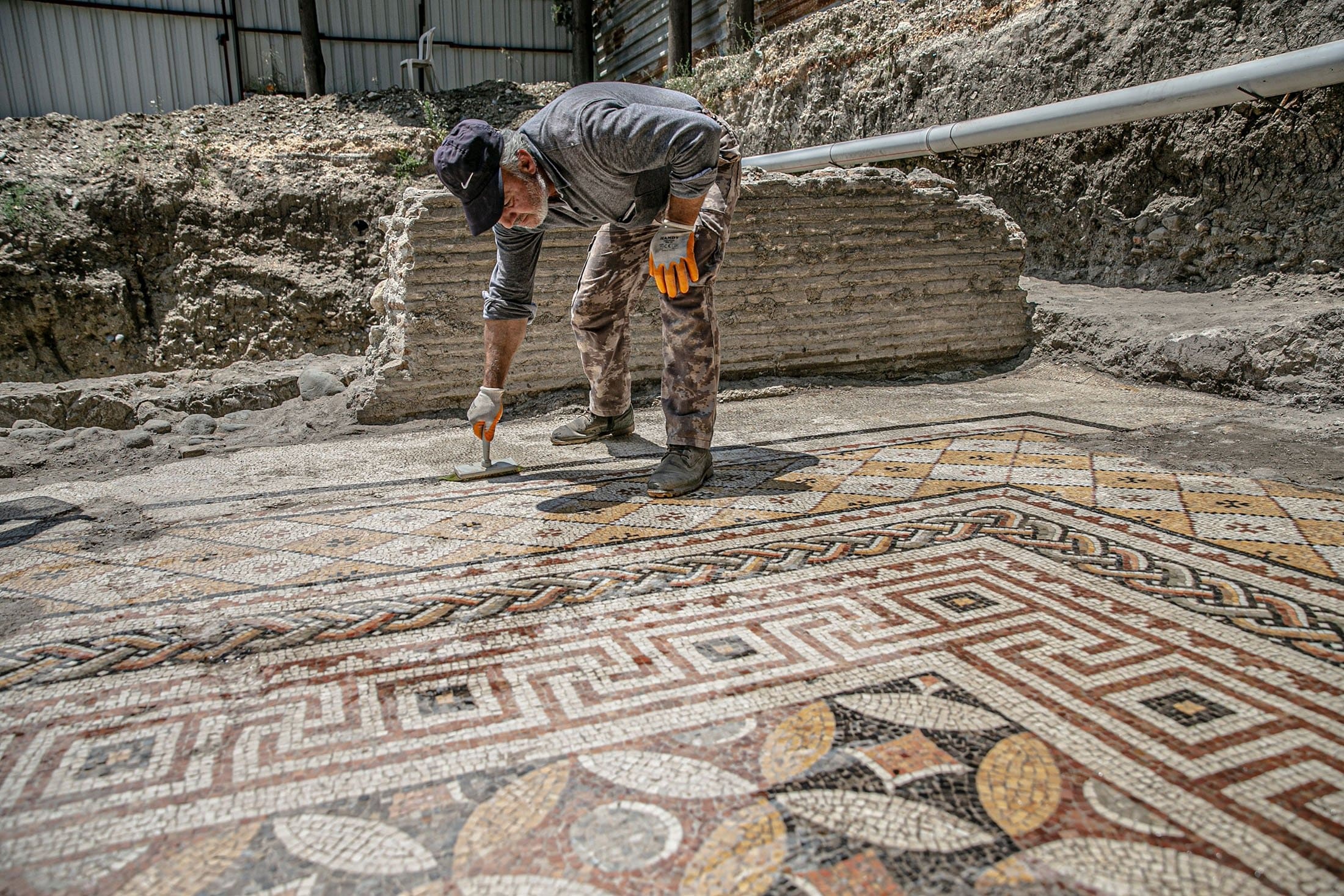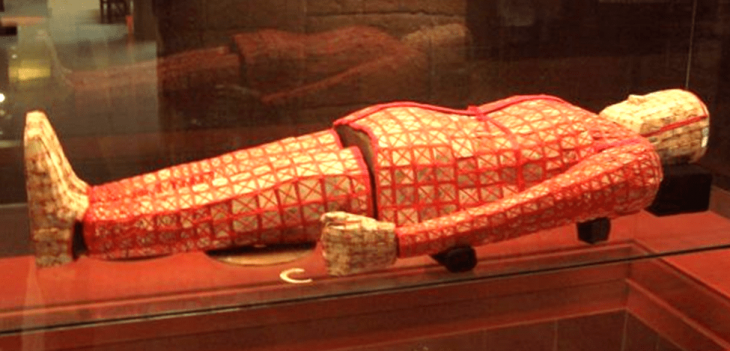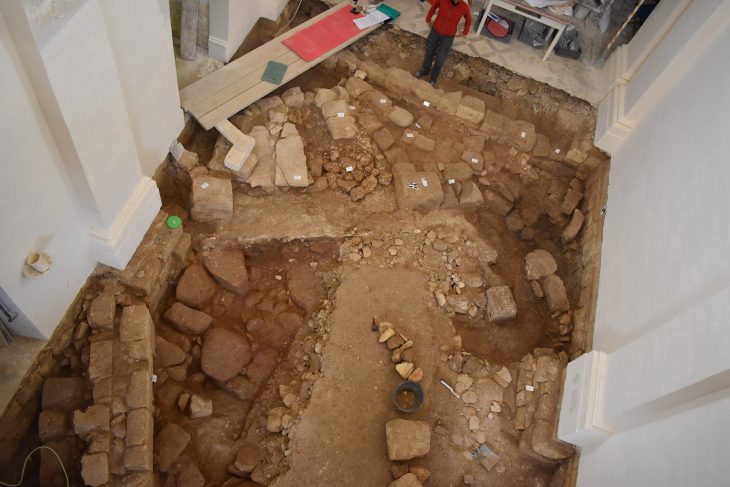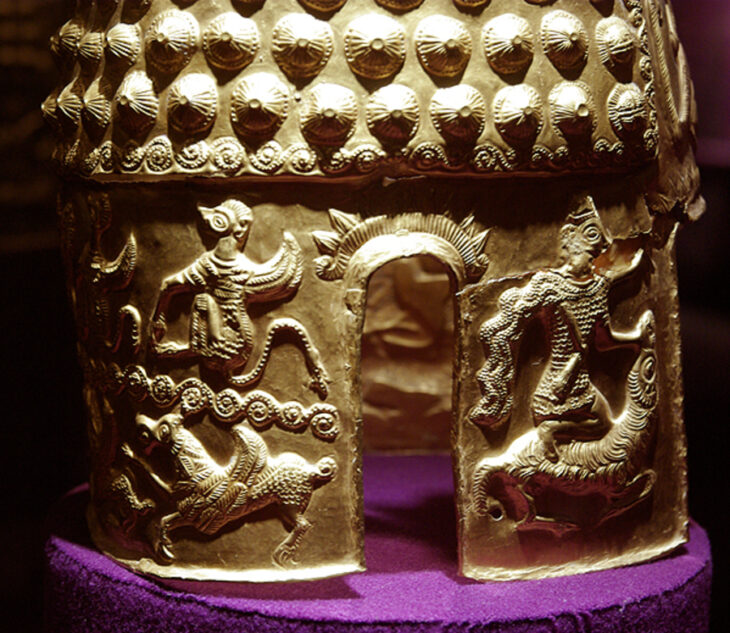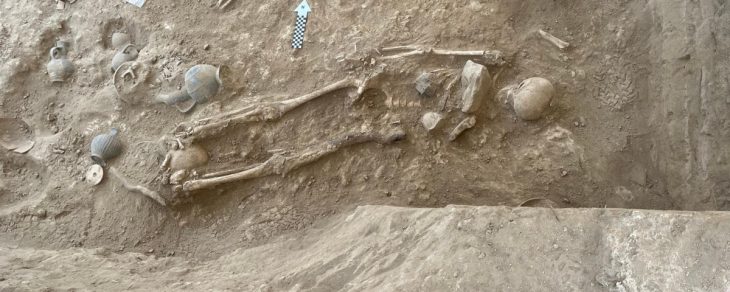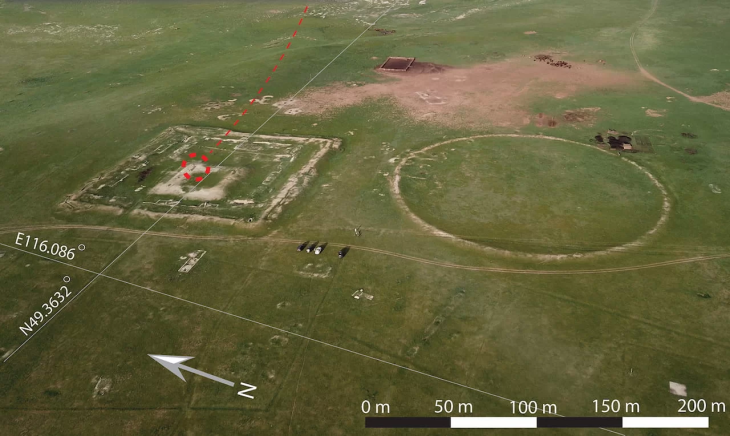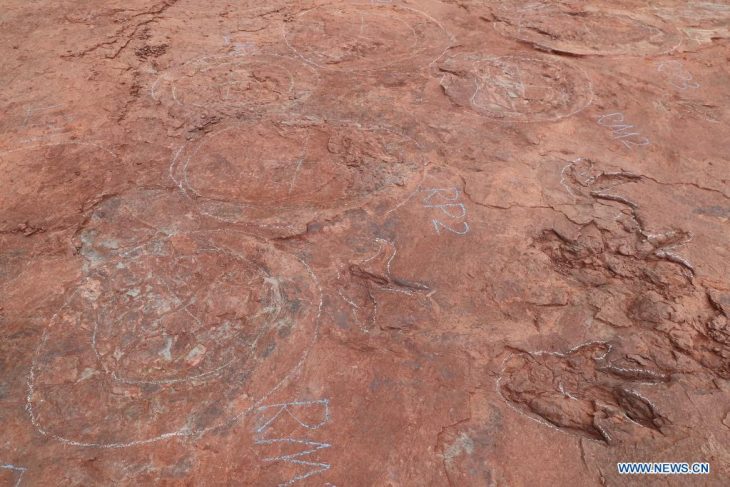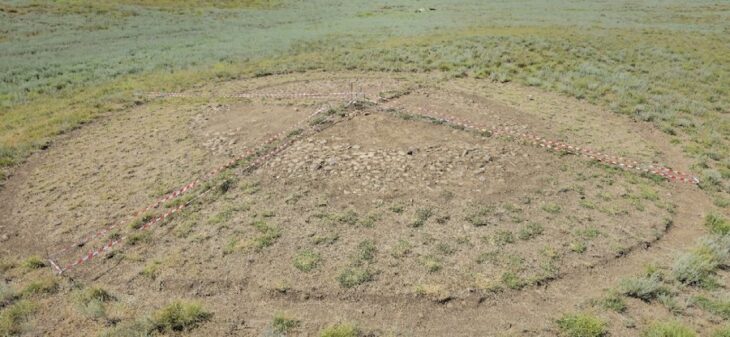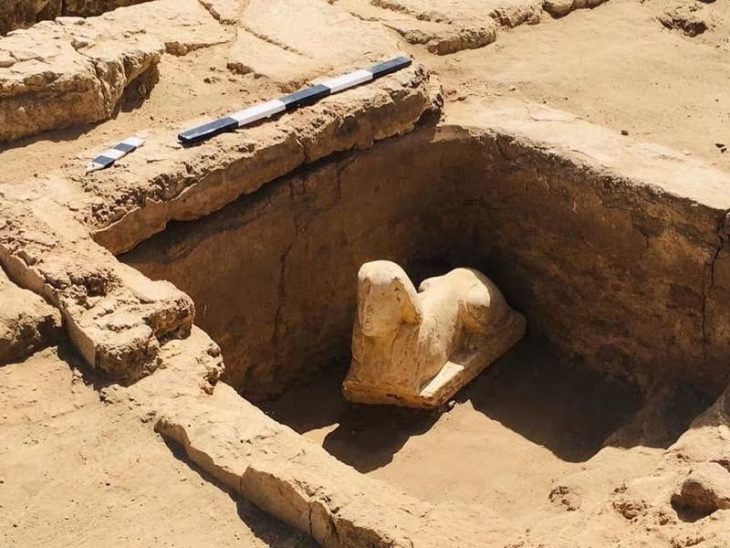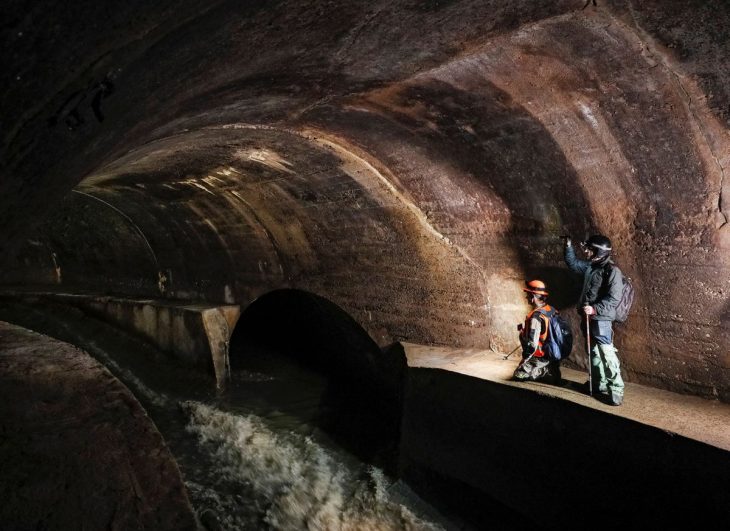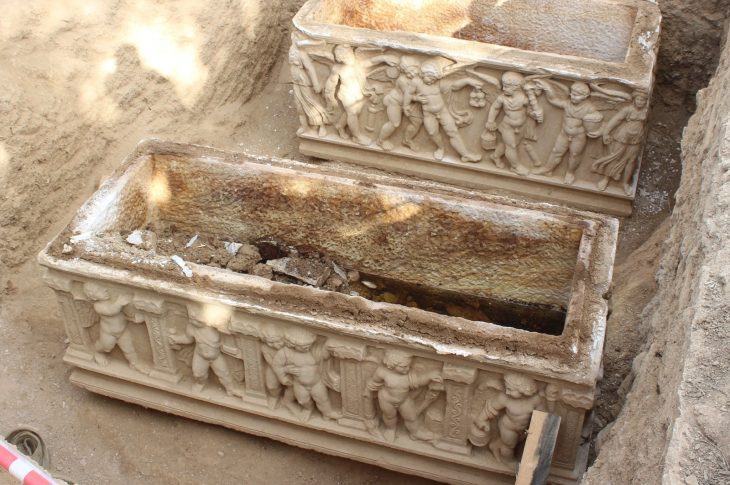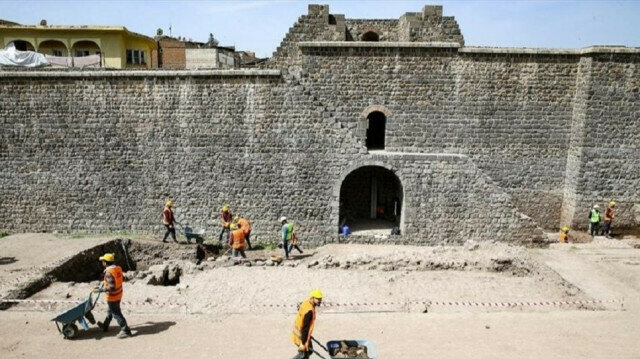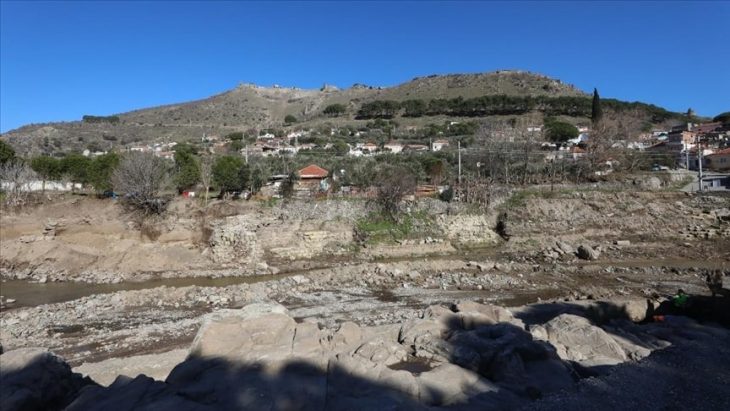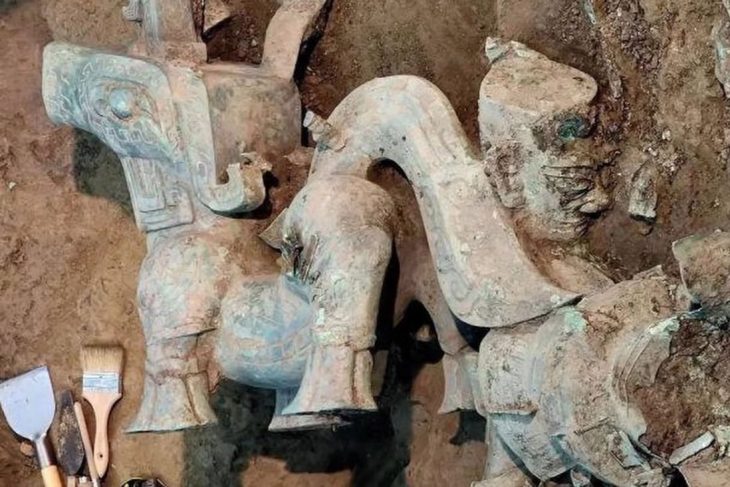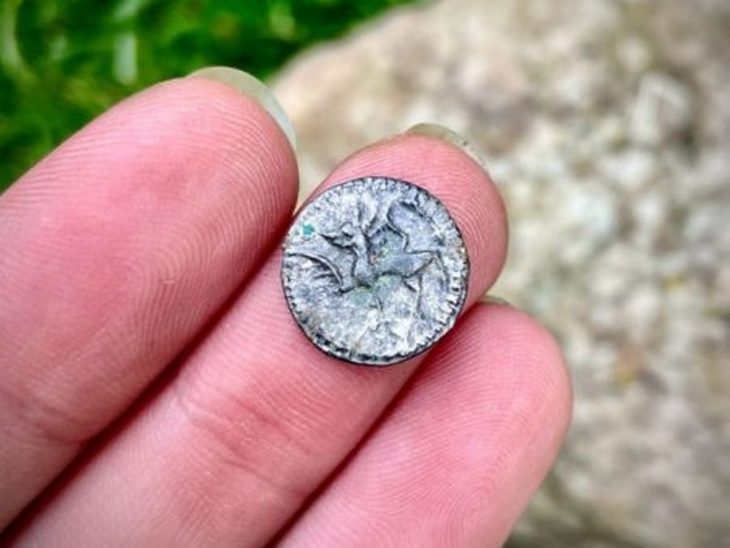Workers working to lay the foundation of a new building in the Defne district of Hatay, southern Turkey, by accident discovered the ruins of a Roman villa, with its preserved geometrically patterned mosaic floor.
A historical structure was encountered during the foundation excavation of the construction to be built on the site of an 8-story building that was destroyed in the scope of urban transformation in December 2021 in the Sümerler District.
Work on the area was halted when it was reported to the Hatay Archeology Museum Directorate, and an inquiry was started.
In the examination carried out by the archaeologists in the area, it was determined that the ruins were the wall of a Roman villa and that there was a floor mosaic with geometric decoration on its floor.
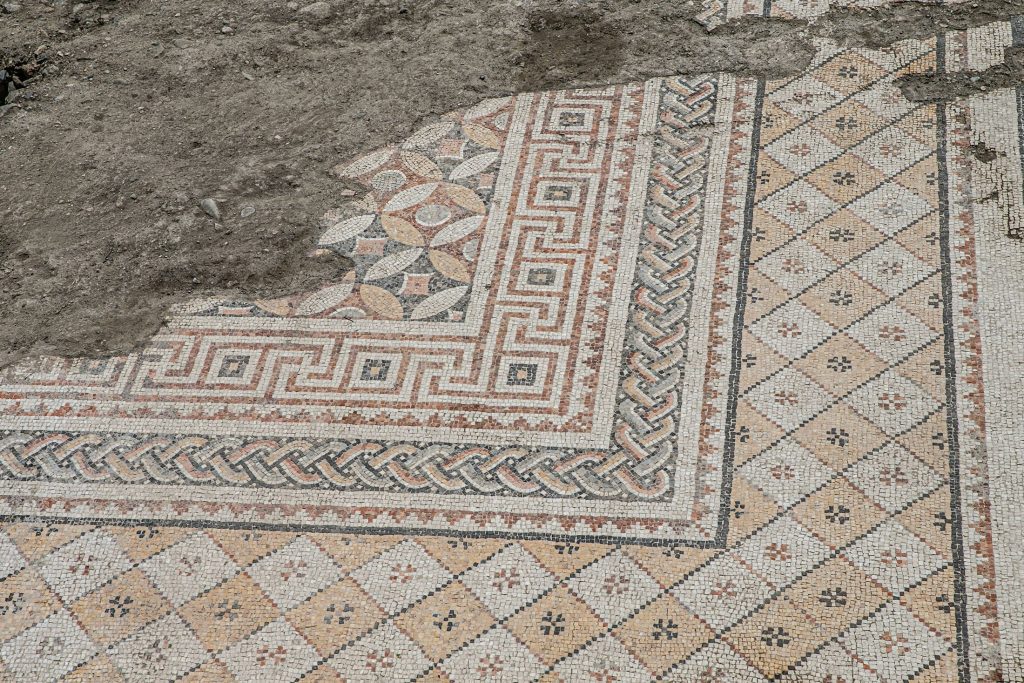
Ayşe Ersoy, director of Hatay Archeology Museum, told Anadolu Agency (AA) that traces of many artifacts from the Roman period have been discovered in Hatay, which was called Antiochia during the Roman Empire.
Ersoy stated that under the sponsorship of the Defne Municipality, the rescue excavations continue in the area where the remains were found, carried out by a team made up of an archaeologist, an art historian and 11 workers.
“Floor mosaics and wall remains of a Roman villa were unearthed. Based on the ruins and small finds, we determined that this place was inhabited until the 2nd and 5th centuries,” she said.
“Antiochia was settled in a large area between the Orontes River and the Habib-i Neccar Mountains. It was the third largest city in the Roman Empire period after Rome and Constantinople. Its area of spread is very wide. The road of Antiochia, which starts from the Aleppo gate, goes up to the Defne gate, and there are settlements along the way. This is a villa and ruins from that period.”
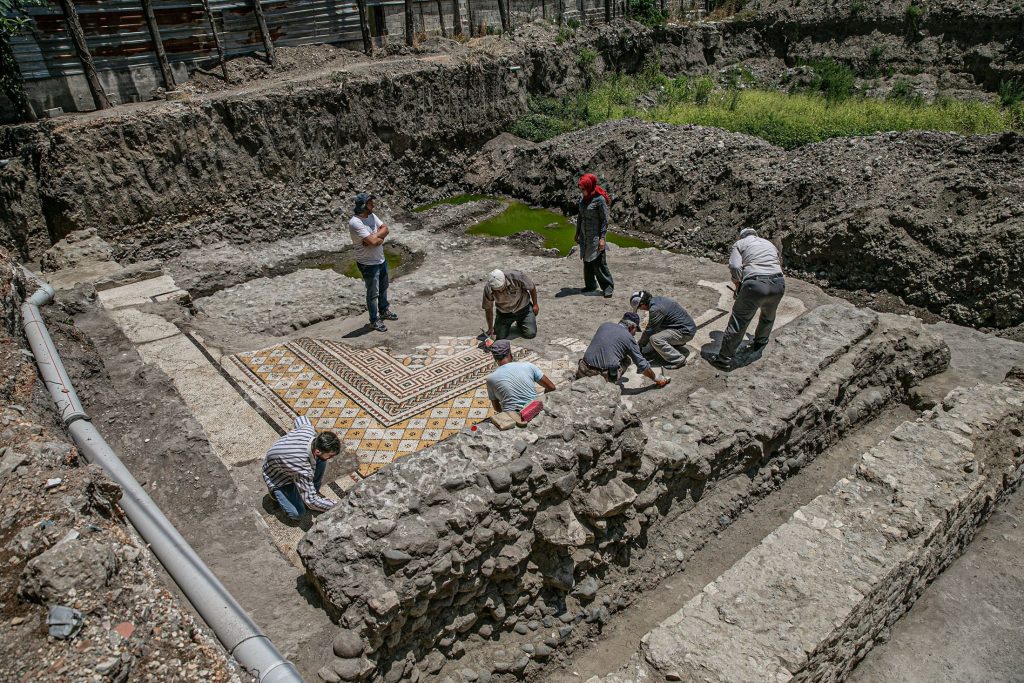
Ersoy said that during the excavations, they found that some of the remains of the villa walls and some of the floor mosaics were damaged.
She noted that there was no possibility of expanding the excavation to surrounding sites due to the presence of multistorey buildings in the area.
“In the coming days, we will begin drilling in the adjacent parcel to determine whether the area of historical remains is larger and we will present the matter to the conservation committee. Then, it will be decided whether the artifacts will be moved.”
Cover Photo: AA

